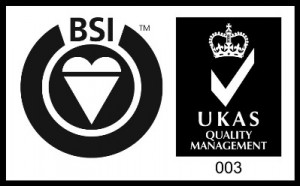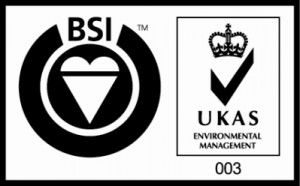Help Centre
Have a technical question or issue about gaskets and sealing? Unsure about chemical resistance, temperature, or pressure? Take a look at our help centre.
Contact Us
Need a price for a standard or bespoke part? Why not send us a quotation request.
Glossary Of Terms
Below can be found a glossary of basic gasket terms. For further technical advice, please do not hesitate to contact us.
Boiler Door Joint: A boiler door joint is a gasket, or seal, for a boiler door (such as on a traction or steam engine). Boiler door joints can be supplied as Topog-E type joints, or manufactured from woven-proof glass fibre.
Bore: The bore specifies the inner dimension (I.D.) of the gasket.
Carbon Steel (C.S.): Carbon steel is steel in which the main alloy is carbon. Carbon steel is used to manufacture spiral wound gaskets (S.W.G).
Class: The class of a gasket specifies its standard sizes/ rating (E.g. P.N.16, P.N.40, CL.150, etc.).
Cork: A gasket material manufactured from the cork tree. Cork material is typically combined with rubbers to give it greater resistance to chemicals and solvents. Cork is a low compression jointing.
EPDM: EPDM is a synthetic rubber used to manufacture gaskets. EPDM gaskets are suitable for use with water; a grade for use with drinking water is also available. EPDM is suitable for use up to 120 degrees centigrade (°C).
Foam: Foam, or sponge, is rubber that has been formed into an air-filled matrix structure. It is typically used to manufacture environmental, and dust, seals for equipment.
Full Faced (F.F.): A full faced gasket is a gasket that covers the full face of the flange. A full faced gasket will have bolt holes, as the bolts will run through the flange and the gasket.
Gasket: A generic term for a part the fits between two pieces of metal, typically for sealing purposes. Gaskets are commonly, although not always, made of flexible and compressible material.
Grade X: Shorthand for British Standard BS7531X. These materials are suitable for use up to a medium pressure grade of 100 bar and to 400 degrees centigrade (°C).
Grade Y: Shorthand for British Standard BS7531Y. These materials are suitable for use up to a medium pressure grade of 70 bar and to 350 degrees centigrade (°C).
Graphite: Graphite is a gasket material commonly used with steam.
Inner Bolt Circle (I.B.C): I.B.C. gaskets, or joints, fix within the diameter of the bolt circle. Otherwise known as raised face joints (R.F.), they are contrasted with full faced gaskets (F.F.) which cover the face of the flange and have bolt holes.
Inner Diameter (I.D.): The inner diameter specifies the inner dimension, or bore size, of the gasket.
Neoprene: Neoprene is a synthetic rubber used to manufacture gaskets. Neoprene gaskets are commonly used for exposed environment applications, such as those involving sea water.
Nitrile: Nitrile is a synthetic rubber used to manufacture gaskets. Nitrile gaskets are commonly used for applications involving oils and fuels.
Non-Asbestos: Non-asbestos materials replace asbestos gasket materials. These materials typically have a kevlar, glass, or carbon base, and are otherwise known as compressed fibre gasket materials.
O- Ring: An o-ring is a loop of elastomer with an o-shaped cross-section.
Outer Diameter (O.D.): The outer diameter specifies the outer diameter of the gasket.
Paper: Gasket paper, otherwise known as cellulose paper or oil paper jointing, is a paper impregnated with chemicals to make it resistant to oils, fuels, and solvents.
Pipe Gaskets: Pipe gaskets are those which fit the standard range of pipes, and are specified by their: bore size, thickness, table/ class, and whether they are full faced or raised face joints (I.B.C.).
Pitch Circle Diameter (P.C.D.): The circle passing through the centre of the bolt holes (typically four holes equally spaced on a 150mm P.C.D.).
Pressure Rating: the pressure the material can seal against.
PTFE: PTFE is a plastic used for making gaskets. PTFE is extremely chemically inert, and as such is resistant to chemicals and corrosives. PTFE also has a low co-efficient friction.
PTFE Envelope: A PTFE Envelope is an ‘envelope’ of PTFE designed to line the bore of a pipe gasket. PTFE is an extremely inert material but it is also comparatively expensive. Having a PTFE bore-liner is therefore a way of gaining the chemical resistance of PTFE without the associated costs. Such envelopes can be fitted to rubber, or non-asbestos, gaskets.
Raised Face Joint: A raised face joint, otherwise known as an I.B.C. (inner bolt circle) gasket, is a ring that sits within the diameter of the bolts holding the flanges together. It is contrasted with a full faced (F.F.) gasket which covers the face of the flange and has bolt holes.
Ring Joint/ Ring Type Joint (R.T.J): Is a metal ring of oval or octagonal section, usually made of soft iron or stainless steel.
Rubber: an elastic material that comes in natural and synthetic forms.
Shore: Shore A, (otherwise known as durometer), specifies the hardness of material (e.g. 60 SH).
Silicone: Silicone is a synthetic rubber used to manufacture gaskets. Silicone can withstand 200°C, and is chemically inert, which gives it application in the food processing industry.
Spiral Wound Gaskets (S.W.G): Spiral wound gaskets are made of a metal coil, or winding, with a material filler. Spiral wounds allow for a higher bolt loading of the pipe flanges. Spiral wounds can withstand very high pressures.
Stainless Steel (S.S.): Stainless steel is a steel alloy resistant to corrosion.
Table/ Flange Dimensions: These define gaskets to fit particular flanges (e.g. table D. P.N. 16, A.S.A. 150 etc.).
Thickness: The thickness of the gasket. It is best of go for the thinnest gasket possible given your application, as the pressure on the gasket will increase in proportion to its thickness.
Viton: Viton is a synthetic rubber used to manufacture gaskets. Viton can withstand temperatures up to 250°C, and is a very inert but expensive rubber. Viton gaskets are typically used in extreme environments, in the presence of acids and corrosives.



